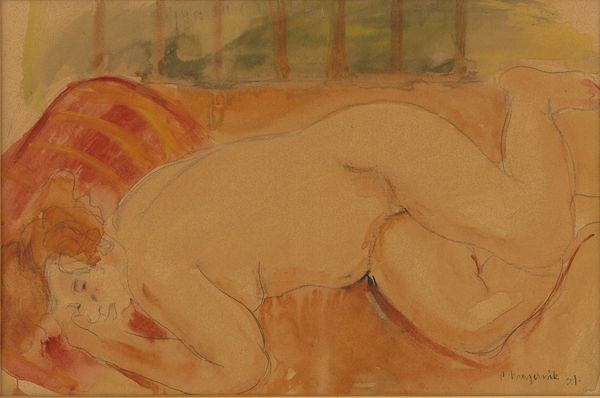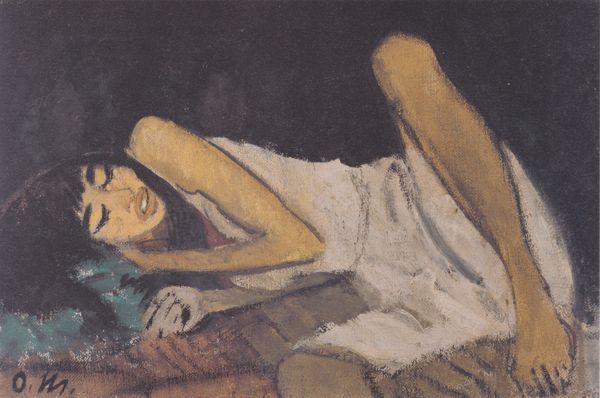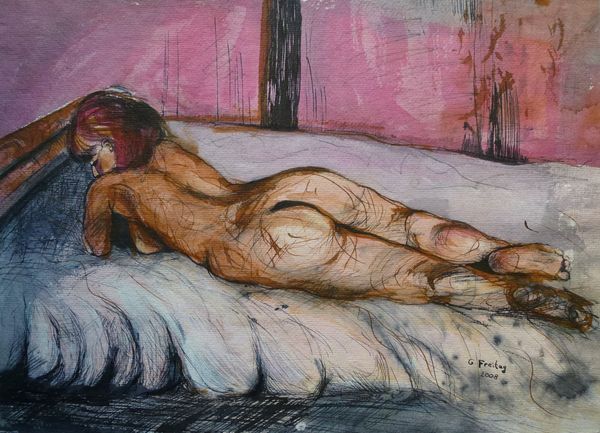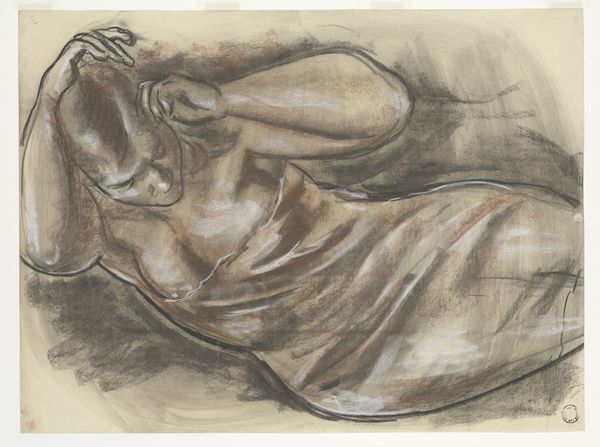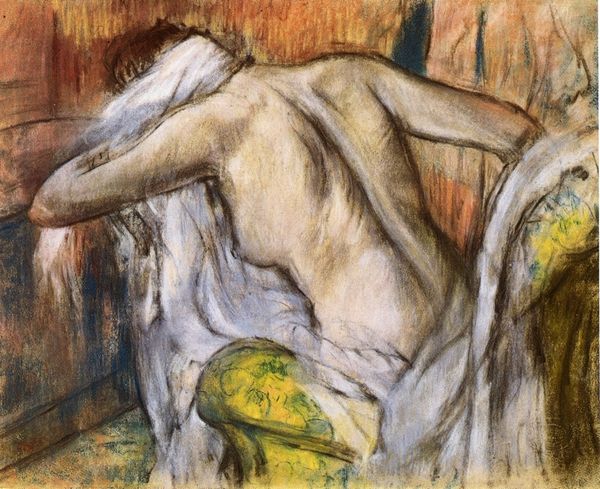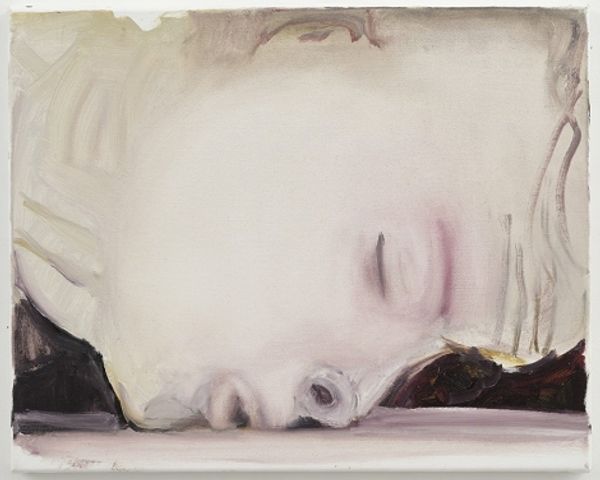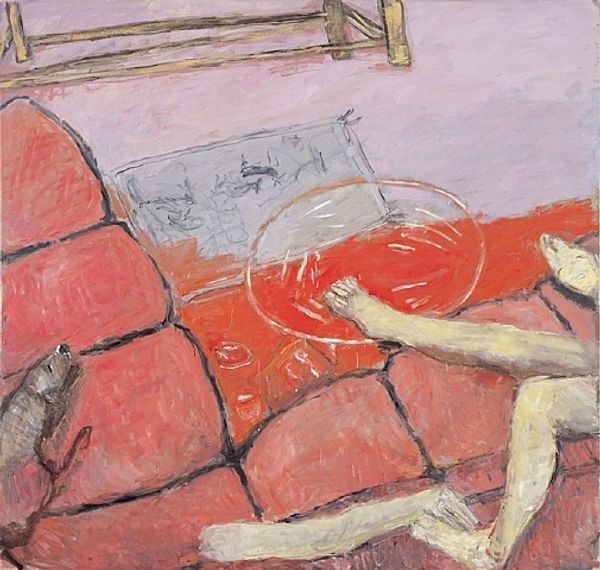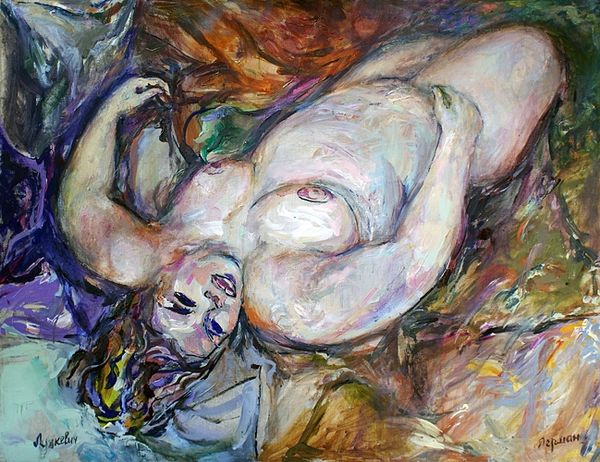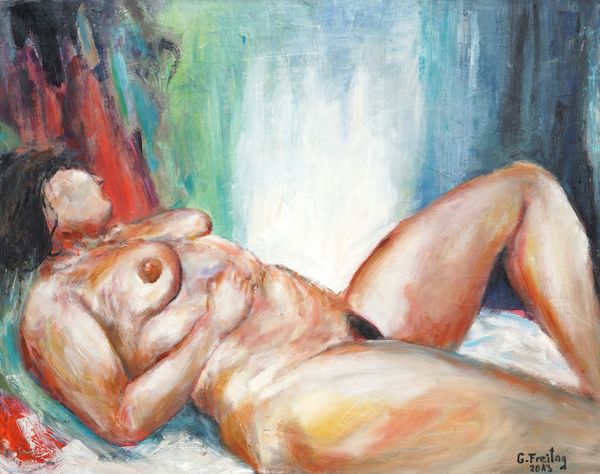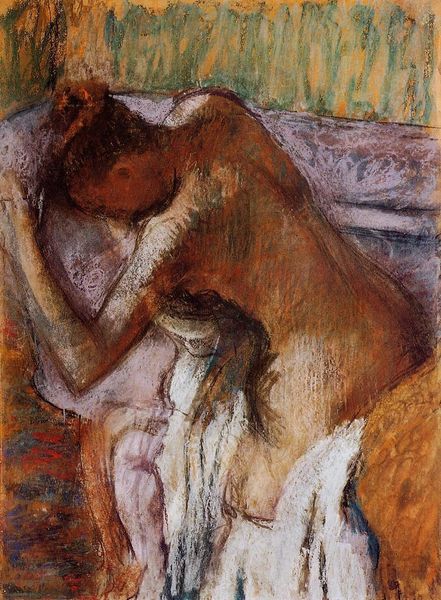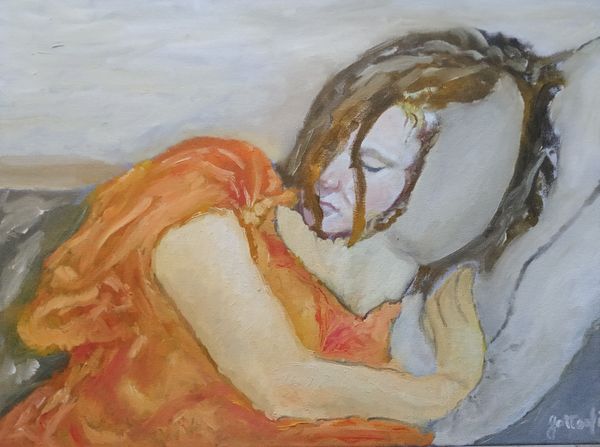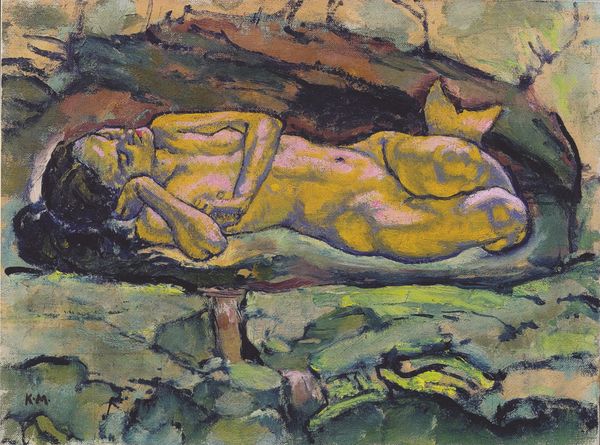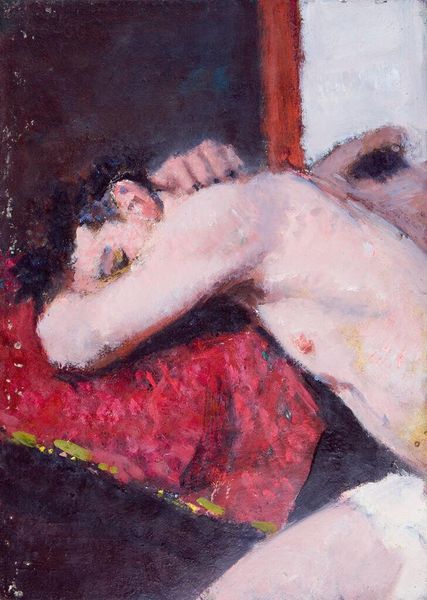
Dimensions: 60.0 x 65.5 cm
Copyright: Public Domain
Editor: So, here we have Pierre Bonnard's "Reclining Nude against a White and Blue Plaid," from around 1909, an oil painting now hanging at the Städel Museum. What strikes me is the rough, almost raw application of paint; you can really see the hand of the artist at work. What stands out to you when you view this piece? Curator: I'm drawn to the materials themselves. The thickness of the oil paint, the very visible impasto technique, signal a move away from illusionism. We are acutely aware of the labor involved, the physicality of Bonnard's process. Consider how this diverges from traditional academic nudes meant for elite consumption. Editor: So it's a bit of a social statement just by emphasizing the "made-ness" of the artwork? Curator: Precisely! Think about the plaid itself, the woven fabric reproduced laboriously with paint. It democratizes the subject matter. How does the act of rendering this commonplace textile, normally destined for domestic interiors, elevate it to high art while also commenting on labor and the everyday? Is Bonnard questioning the value we place on different forms of labor, from the textile worker to the "artist"? Editor: That's such an interesting way to view the work. I had initially only considered the intimate scene and the artist’s perspective, but the plaid challenges it. Curator: The plaid unsettles a straightforward interpretation, right? It's not merely decorative; it's integral to the social fabric Bonnard constructs on the canvas. Editor: I guess it makes me wonder if this piece celebrates everyday labor, or whether it appropriates and perhaps even aestheticizes the common. I didn’t expect a reclining nude to challenge the divisions of labor in the art world. Curator: And there you have it: art acting as both a reflection of, and a participant in, the material realities of its time. Seeing is never neutral; what do you take with you now? Editor: To reconsider "ordinary" subjects as a challenge of how art is produced, valued, and who is doing the labour in plain sight.
Comments
stadelmuseum about 2 years ago
⋮
With flushed cheeks and closed eyes, Bonnard’s companion, Marthe, is shown lying naked on a bedspread. Yet the pleasurable moment is overshadowed, for is that not a mask-like face staring at the woman from within the strange whitish formation in the upper right of the painting? Bonnard makes use of such enigmatic imagery in many of his works and it often triggers a sense of unease. The Post-Impressionist was long considered a painter of carefree joie de vivre until the dark side of his art emerged from beneath the tranquil surfaces.
Join the conversation
Join millions of artists and users on Artera today and experience the ultimate creative platform.
